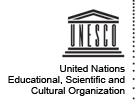Safeguarding and
Development of Angkor
 International Programme for the Protection and Development of the Historic Site of Angkor and its Region
International Programme for the Protection and Development of the Historic Site of Angkor and its Region
After twenty years of war, King Norodom Sihanouk launched in 1991, an appeal to UNESCO to safeguard the Angkor site. In 1993, responding to his appeal, Japan and France co-chair in Tokyo the first intergovernmental conference on safeguarding the Angkor site, inscribed in 1992 on the World Heritage List of Unesco.
The first intergovernmental conference adopted the "Tokyo Declaration", which defines the basic text, the framework and modalities of international aid.
This Declaration :
- Advocated the use for a strong international.
- established the International Coordinating Committee (ICC), co-chaired by France and Japan, whose secretariat is provided by Unesco, pending proposal, evaluation, monitoring of international aid,
- Advocated a comprehensive and interdisciplinary problems.
- Encouraged the adoption of legislative measures and preservation of the site, and the establishment of a comprehensive program of staff training Cambodians at all levels required.
- Recommended the establishment of an institutional framework for managing the Cambodian authorities.
- Proposed holding after 10 years, a second intergovernmental conference to take stock of the action of CICC.
The majority of Cambodian goals and challenges were identified, including the creation in 1995, the APSARA Authority, a public institution in charge of site management.
The first decade (1993-2003) under the sign of the backup has paved the way for a new decade 2003-2013 under the sign of sustainable development and the fight against poverty. A second intergovernmental conference in Paris (November 14 to 15, 2003) led to the adoption of a statement that bears its namem.
- devoted the prominent role played by the ICC and has renewed its efforts for the next decade
- has expanded its scope of intervention to archeology (previously centered on the restoration and preservation of architectural heritage) and opened its expertise in sustainable development through the creation of a Specific Technical Committee from among its members.
- has strengthened and expanded the mandate of the APSARA Authority to meet the new sustainable development objectives set by the international partners
- advocated the promotion of a sustainable ethical tourism by involving local people.
- reiterated the need to ensure the transfer of expertise between international experts and their Cambodian counterparts and coordinate all initiatives in the field training.
Action
of France
The action of France aims to build the Cambodian government the legal, financial, technical and human resources management and program monitoring.
Period from 1992 to 1999
France contributed :
- the registration file of Angkor on the World Heritage List in 1992,
- to the establishment of an administrative structure APSARA, 1995,
- technical assistance to the Angkor Conservation since 1994 (including parts inventory),
- Demining of Siem Reap province from 1992 to 1996,
- the creation of a heritage police in 1994,
- the creation in 1998 of a restoration of statuary Lapidary Museum in Phnom Penh,
- restoration with the assistance of the EFEO, terraces of the Leper King and Elephants now completed and the temple mountain Baphuan (ongoing),
- urban development and tourism provided by AFD (ongoing).
Period from 2000 to- 2009
L’intervention
de la France depuis l’année 2000 s’appuie sur
un engagement important dans le cadre d’un FSP « Site
d’Angkor - Patrimoine et développement » (montant
2 937 368 €) qui s’est achevé au 31 décembre
2004, ayant permis de fédérer les actions des ministères
des Affaires étrangères, de la Recherche, de la
Culture, et de l’Intérieur (poursuite de la restauration
du Baphuan, appui institutionnel à l’APSARA, carte
archéologique d’Angkor Thom, inventaire archéologique
des objets d’art Khmer, renforcement de la police du patrimoine).
The continuity of this commitment is ensured by the establishment in 2005 of a second FSP, "Heritage Angkor and sustainable development" (amount € 2.75 million) and a duration of 48 months (2005-2009) that will presentation and development of Baphuan, continued institutional support to APSARA, the creation of a specialized training center for curators, the modernization of the National Museum in Phnom Penh and the development of the restoration workshop of the Museum.

 Angkor
at the time of development (by
UNESCO)
Angkor
at the time of development (by
UNESCO)
Ten years after the start of the campaign to safeguard Angkor (Cambodia), the most serious problems of this emblematic of Khmer culture were resolved through the efforts of the international community has invested more than $ 50 million dollars, the authorities' commitment to the Kingdom and the coordination efforts by UNESCO.
The balance of these ten years speaks for itself: from the hundreds of restoration projects and development work completed, we must mention the neutralization of more than 25,000 anti-personnel mines - including 3000 present in the archaeological sites - and the destruction of 80 000 explosive ordnance. Creating a heritage police, and the detailed inventory of cultural property and public awareness campaigns to avoid buying stolen goods, have prevented the looting cultural within the protected perimeter.
Next to the archaeological and architectural backup which still involve teams from France, Japan, Germany, Italy, India and China, it is time to act in favor of development, expanding the process with projects of direct benefit to local people.
It is on this basis that the Second Intergovernmental Conference for the Protection and Sustainable Development of Angkor was held in Paris (November 14 and 15), at the invitation of the French government, members of the International Coordinating Committee (ICC) *, co-chaired by France and Japan and which UNESCO provides the secretariat.
As stressed by the Director General of UNESCO, Koïchiro Matsuura: "What we learned this decade and all she can still teach us, should be a model for the rehabilitation of other historic sites in a situation of post-conflict - such as Bamiyan in Afghanistan or the Mesopotamian legacy in Iraq - which have suffered from neglect, wanton destruction and devastation of war ".
Among the forty projects that the Conference decided to support, we can emphasize the restoration of the temple of Phnom Bakheng (tenth century), the most threatened of Angkor, the creation of a central laboratory for heritage conservation, signage monuments, the study of a master plan for water supply to all inhabitants of the area, the improvement of sanitation and rehabilitation of the bridge close to the temple of Takeo on the Siem Reap River.
Moreover, to improve communications between the site and the other provinces of the country, the Cambodian government has committed over the long term with the construction of a new airport, away from archaeological sites, increased river traffic between Phnom Penh and Battambang and rehabilitation of the access road to Thailand by developing the provincial highway network. It is hoped that this will lengthen the average stay of tourists by encouraging them to travel the region to discover its many treasures.
One of the challenges is to manage the massive flow of visitors: over 300 000 in 2003 and growing by nearly 30% per year. The Paris Declaration, adopted at the end of the Conference (**), recognizes "the need to develop in the Siem Reap / Angkor, a sustainable ethical tourism that could become a tool in the fight against poverty".
The Declaration also emphasizes "the importance of involving local people in the area and around Tonle Sap, in promoting this policy in order to highlight the diversity of their cultural resources both tangible and intangible, and facilitate their access to a part in education and training, other employment and a rewarding cultural life ";.
An original aspect of international projects of Angkor Programme - both past projects as those to come - is that they include a training component, which allows Cambodia to have a national staff trained in the management and conservation of cultural heritage, staff who had disappeared during the dark years of the Khmer Rouge. The projects contribute to creating a generation of architects and archaeologists who will take appropriate slowly over international equities.
With the rescue of Abu Simbel (Egypt), a perfect example of mobilizing the international community launched in the 1960s under the auspices of UNESCO, and campaigns for Boroboudur (Indonesia), Angkor illustrates the effectiveness a joint initiative when it comes to preserving a World Heritage Site.
Main attraction of the country, Angkor was the capital of the Khmer empire between the IXth and the XVth century. Real archaeological park of 401 km2 and contains an exceptional concentration of monuments of religious, historical, artistic or human. Besides the temples of Angkor Wat, known worldwide, there are about forty other buildings of different periods and styles. Everything is in an exceptional natural area, with rivers, forests and rice paddies. In addition, Angkor is also a living, inhabited by tens of thousands of people keeping folk traditions and have a rich oral heritage.
 UNESCO has devoted the value of the site in 1992 by including it urgently and simultaneously on the World Heritage List and on the World Heritage in Danger. The World Heritage Committee took this decision, giving up some of its normal requirements, "in response to an exceptional situation." It was urgent, first and foremost, to take measures against mines (It was impossible to move freely without running the risk of death). Theft, vandalism, looting and trafficking of cultural property were also wreaking havoc and causing damage, sometimes irreparable, temples and monuments. Finally, the years of civil war and the Khmer Rouge regime had resulted in a total abandonment. UNESCO has devoted the value of the site in 1992 by including it urgently and simultaneously on the World Heritage List and on the World Heritage in Danger. The World Heritage Committee took this decision, giving up some of its normal requirements, "in response to an exceptional situation." It was urgent, first and foremost, to take measures against mines (It was impossible to move freely without running the risk of death). Theft, vandalism, looting and trafficking of cultural property were also wreaking havoc and causing damage, sometimes irreparable, temples and monuments. Finally, the years of civil war and the Khmer Rouge regime had resulted in a total abandonment.
Conscious of the damage, King Norodom Sihanouk had made a solemn appeal to the international community. The latter responded by organizing in Tokyo in October 1993, a first Intergovernmental Conference on the Safeguarding Angkor. The Tokyo Declaration, adopted at the end of this Conference, had defined the spirit, scope and modalities of international action.
The Declaration has been adopted in Paris, with a series of recommendations to be implemented under the leadership of the APSARA (Authority for the Protection of the Site and Development in the Region of Angkor), created in February 1995 by the Cambodian authorities, constitutes a decisive step which asserts that the cultural heritage of a people is a component of its identity and, as such, a key to its reconstruction. In the words of King Norodom Sihanouk, "Angkor is no longer endangered, but poised for prosperity."

Member of International Coordinating Committee (CIC):
Germany, Australia, Belgium, Cambodia, Canada, China, Republic of Korea, Denmark, Egypt, Spain, United States of America, Russia, France, Greece, Hungary, India, Indonesia, Italy, Japan, Democratic People's Laos, Luxembourg, Malaysia, Mexico, Norway, New Zealand, Netherlands, Philippines, Poland, Portugal, United Kingdom of Great Britain and Northern Ireland, Sri Lanka, Sweden, Switzerland, Thailand, Tunisia, Viet Nam, Asian Development Bank, World Bank, United Nations Food and Agriculture Organization (FAO), International Monetary Fund (IMF), International Centre for Conservation and Restoration of Cultural Property (ICCROM) , International Council of Museums (ICOM), International Council on Monuments and Sites (ICOMOS), World Tourism Organization (UNWTO), United Nations Development Programme (UNDP), Organization of Ministers of Education in Asia South-East Regional Centre for Archaeology and Fine Arts (SEAMEO / SPAFA), United Nations Educational, Scientific and Cultural Organization (UNESCO) and World Monuments Fund. |



